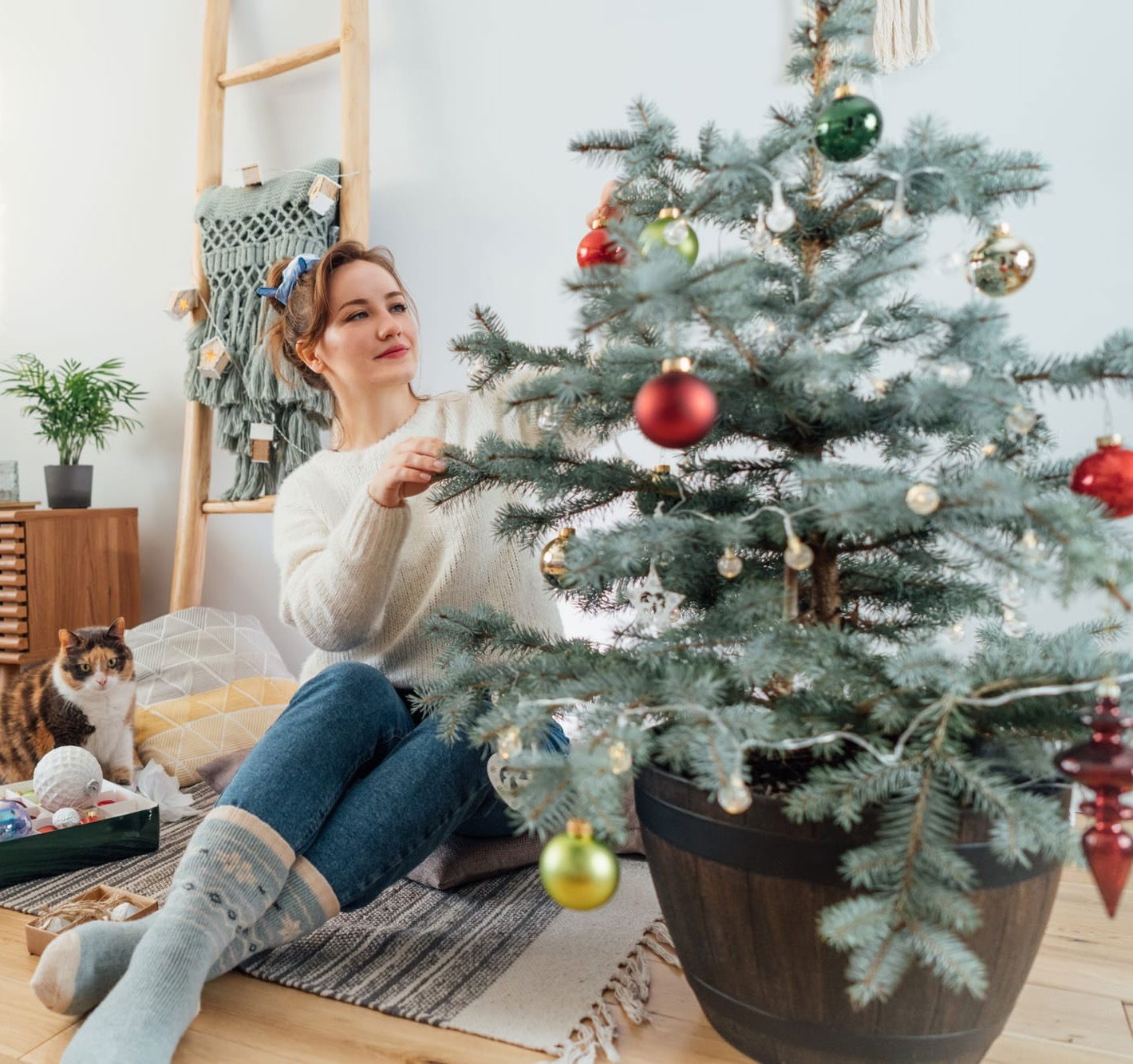
N.B. - This article is about caring for a Christmas tree while it's in the house for the festive period. Cultivation tips on potted trees after December can be found on the RHS Website.
Contents
- Key Christmas Tree Differences Available on the Market
- Location, Water, Humidity & Fertilisation
- Dormancy Care & Annual Flowers
- Common Issues
- Origins, Temperature, Propagation, Repotting & Toxicity.
Key Christmas Tree Differences Available on the Market
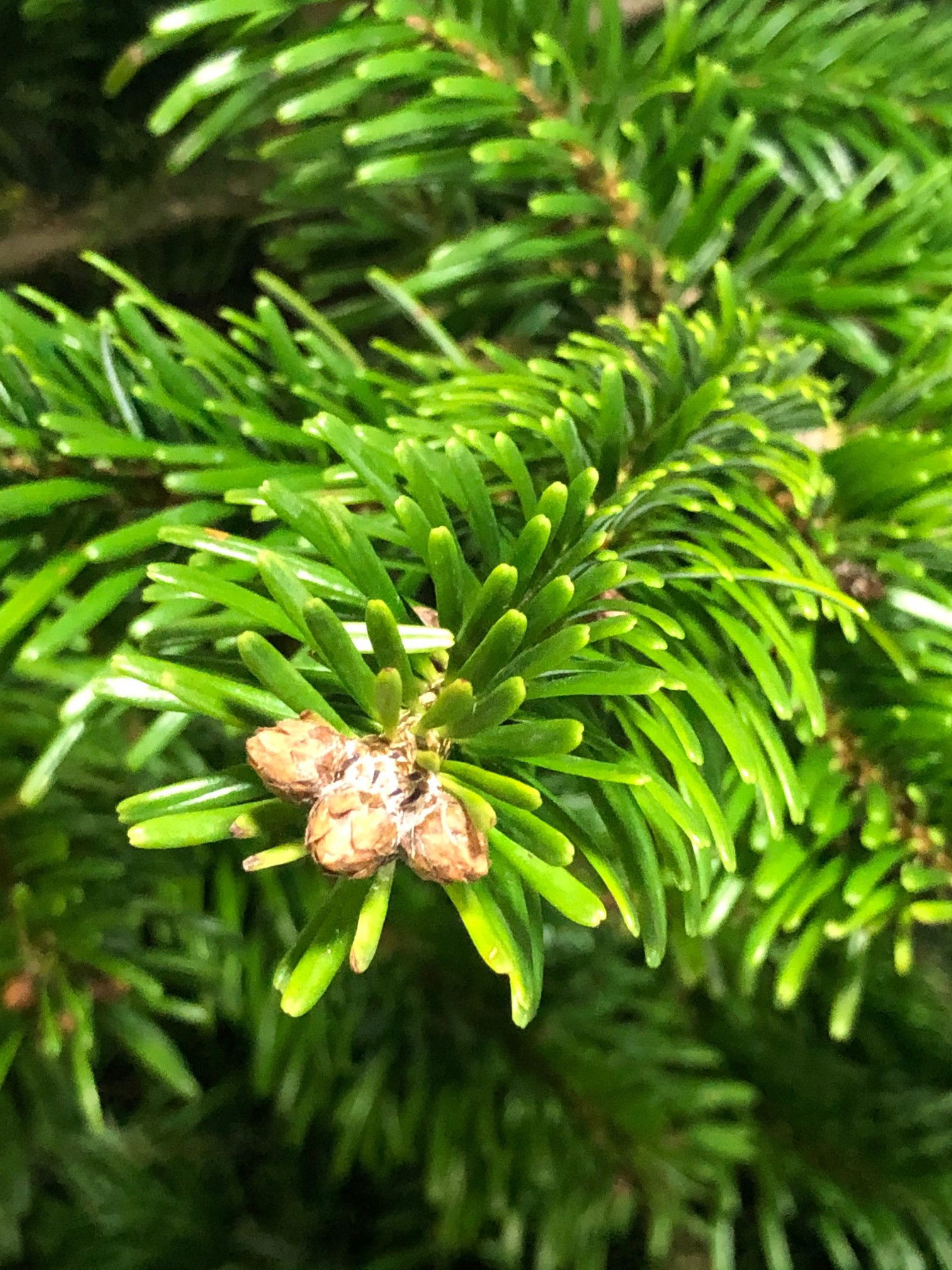 Nordmann Firs are the most popular cut tree in Europe and among the easiest to maintain.
Nordmann Firs are the most popular cut tree in Europe and among the easiest to maintain.
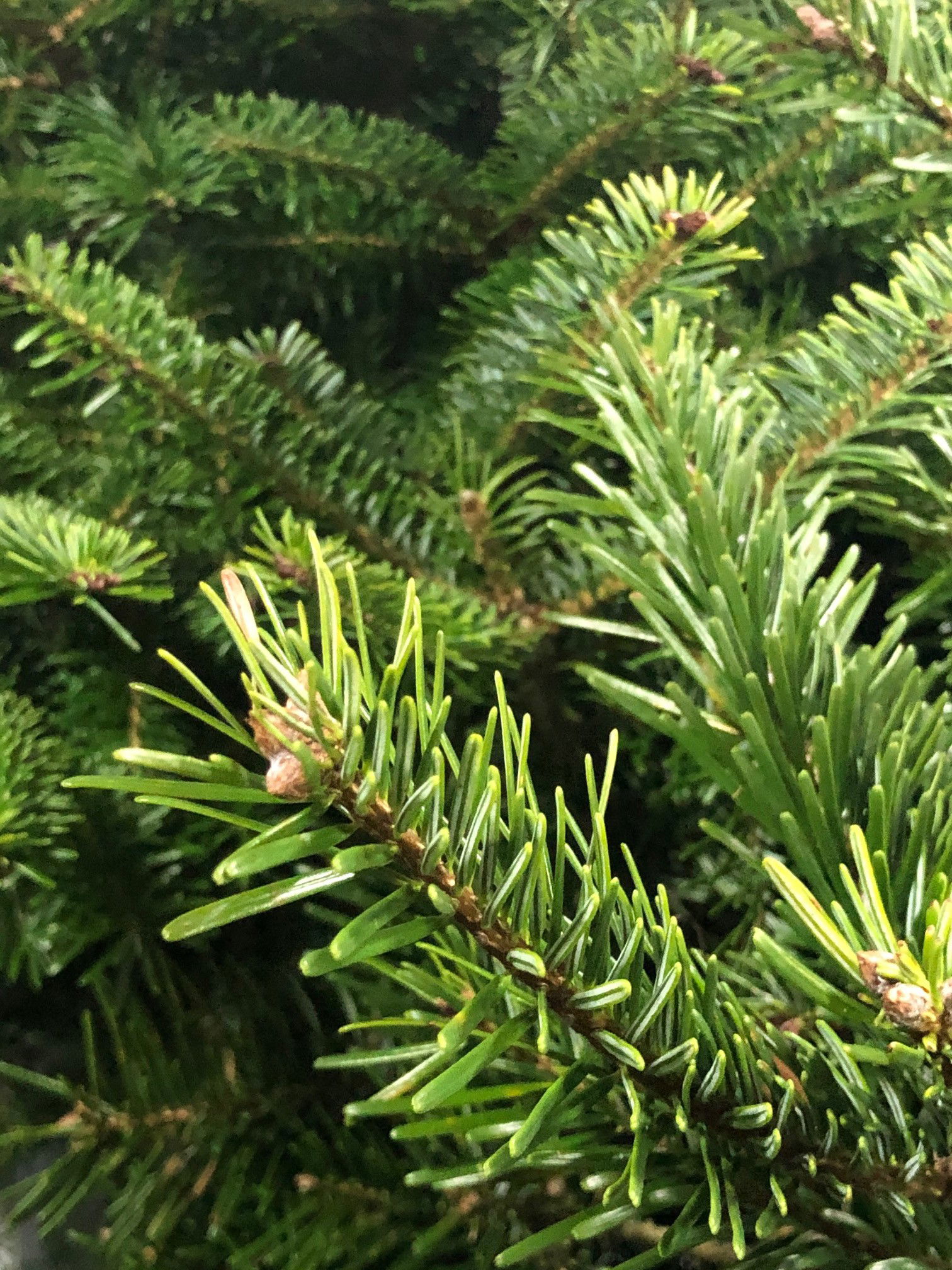 The Fraser & Douglas Fir will hold its needles for the longest, with the latter being the least sharp on the market.
The Fraser & Douglas Fir will hold its needles for the longest, with the latter being the least sharp on the market.
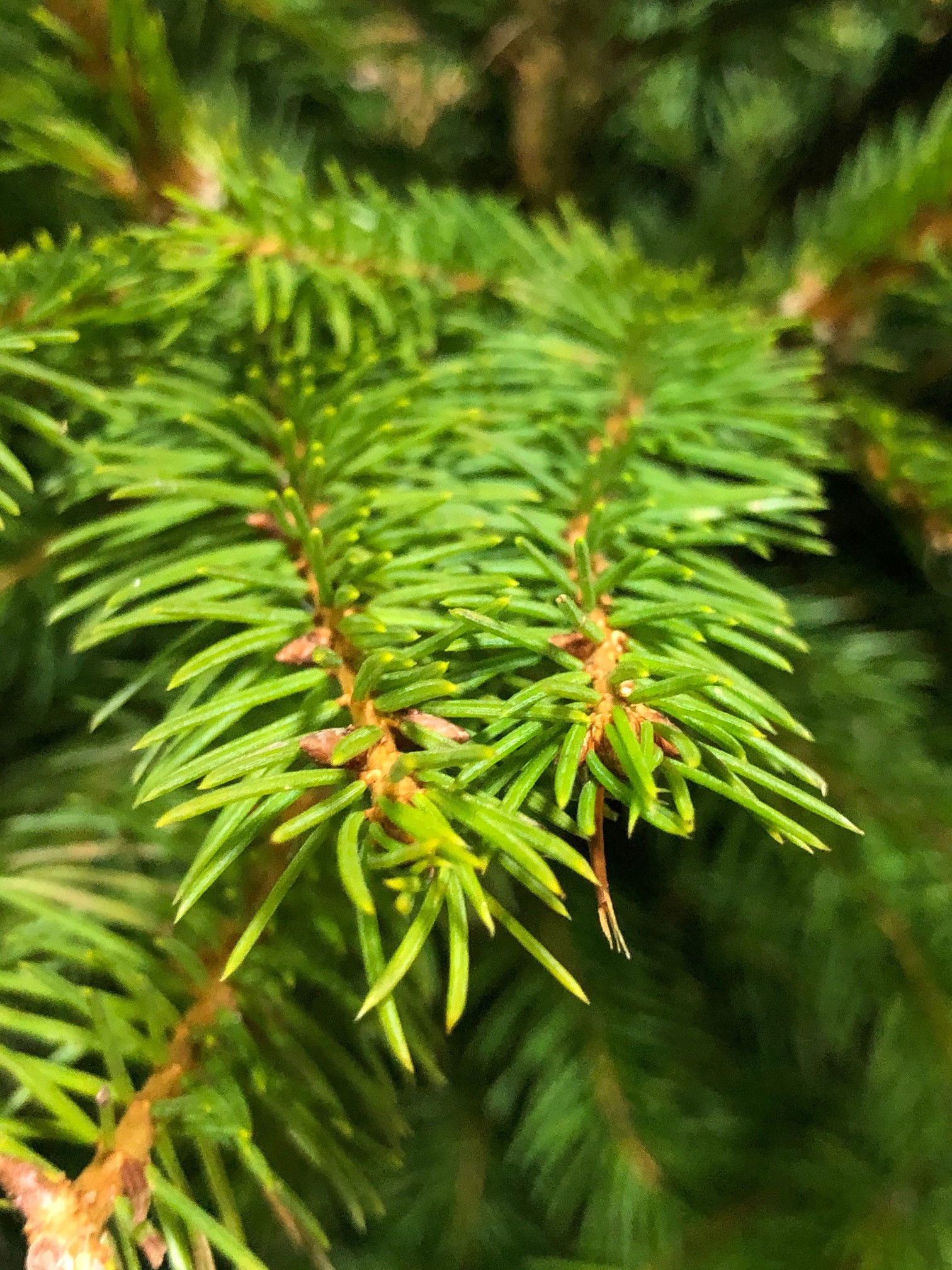 The Norway Fir is the most difficult to maintain and has the quickest needle-drop out of the selection. It's still widely purchased as it closely resembles the true Christmas tree.
The Norway Fir is the most difficult to maintain and has the quickest needle-drop out of the selection. It's still widely purchased as it closely resembles the true Christmas tree.
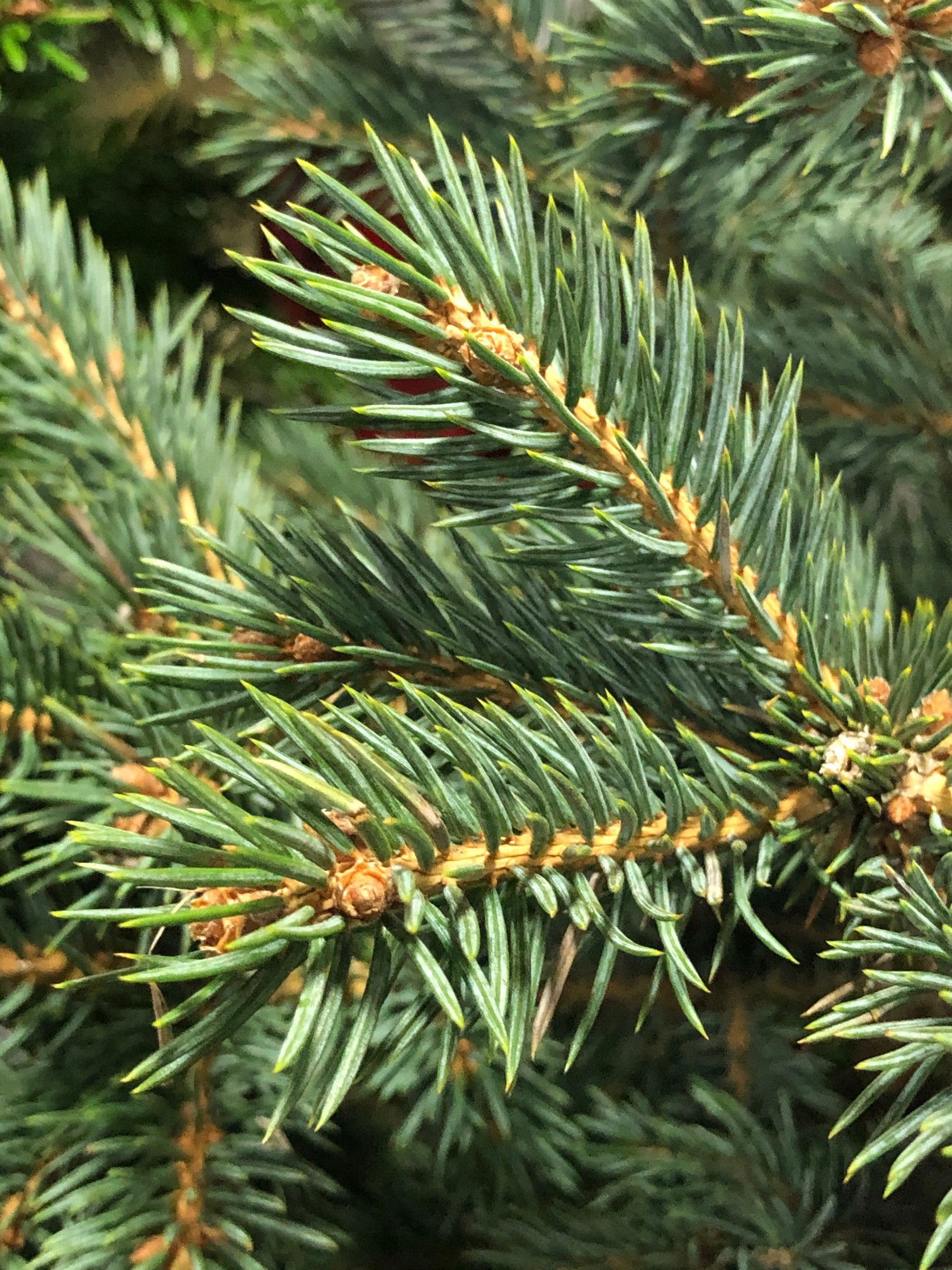 Blue Spruces are the smallest, but most recognisable due to its glaucous appearance.
Blue Spruces are the smallest, but most recognisable due to its glaucous appearance.
Location & Light - 🔸🔸🔸
A location that offers a few hours of morning or evening sun is the ideal site. Avoid situating a Christmas tree in a shady spot - If you're worried about its setting being too dark, if a newspaper can be read whilst having your back towards the light source, you're good to go.
In terms of the ideal location around the house, a room that offers a few hours of either morning or evening sun is vital for good, quality growth - examples of this are near to a south-facing window. Avoid locating the tree more than four metres away from a north-facing window to prevent the chance of over-watering.
Water - 🔸🔸
Continual moist soil is vital for a Christmas tree whilst it's in the home. Once the pot feels light when lifted, compared to when you last watered it, this is the best time to irrigate. Only allow the top third of the soil to become dry in between waters to avoid a dehydrated plant that'll soon drop its needles. Under-watering symptoms include curling or crispy needles, wilted foliage, yellow or brown lower spines and stunted growth. Over-watering symptoms include yellowing or browning needles, stunted growth and wilting. If this has happened to yours, increase the intensity light somewhat with fewer irrigations; if stem's base has fully softened over, this will spell the end of its life. Over-watering is commonly caused by too little light or heat, or a lack of dry soil in between irrigations.
Humidity - 🔸🔸🔸
Average room humidity will not be enough for a Christmas tree. The radiators will be on over-drive during the winter to keep us warm, which in turn will come at the cost of dry air. Despite the ideal humidity level for humans being around 40%, cut trees require almost double that. Introduce either a humidity tray, an artificial humidifier or set some bowls of water underneath the tree's spread to keep the surrounding moisture high. If you can't follow this advice, at least place the tree at least four metres away from an operating heat source as a bare minimum.
Fertilisation - 🔸
Supplement monthly using a general plant fertiliser throughout the year. The best feeds are those that favour nitrogen & phosphorus over potassium - BabyBio or Miracle-Gro are ideal, but a seaweed-based fertiliser is best. Try not to over-supplement the soil due to the species' sensitive nature to the sharp chemicals, found in most fertilisers.
Common Issues with Rooted Christmas Trees
Under-watering is the biggest issue. Its feet mustn't become dry under any circumstances while the plant is in the home. Only water once the top third of the soil becomes dry.
Over-watering can be an issue, too. Although moist soil is vital to maintain good health, avoid keeping the compost too soggy for extended periods to prevent the chance of root rot. Allow the top third of the soil to become dry in between irrigations and try to use tepid water to avert shocking the root systems. Typical signs of over-watering include yellow or brown lower spines, stunted growth and a softened stem. During the colder months, reduce the frequency of waters considerably until the following spring to replicate its dormancy.
Lower needle loss or browning is typically caused by too little moisture in the air or the soil. As mentioned above, Christmas trees should sit in moist compost most of the time to avoid drying up, especially while it's in our warm, dry homes. Not only that, but an adequate level of humidity forms part of a healthy tree, too. Situating it in all-day sunlight or within three metres of an operating radiator will quickly lead to the browning and loss of needles. For those displaying signs of this, remove the affected areas and introduce either an artificial humidifier, humidity tray or a couple of bowls of water beneath the tree's spread.
Too little light should be avoided at all costs. Never situate the tree in too intense light as it'll lead to sun-scorch. If you're scared that the location is too dark it, as long as a newspaper can be read (when facing away from the light), you're good to go.
Origins
Despite the importance and decorations of evergreen conifers since 332 BC, the use of Christmas trees domestically can be dated back to the sixteenth century in Germany. During a sermon, a man named Martin Luther was amazed by the stars twinkling behind evergreens and came up with the idea of candle-lit trees indoors. Although Christmas trees were first introduced to America in the seventeenth century, many Christians didn't accept the concept of Pagan decorations inside the home, until an illustration of Queen Victoria alongside a decorated tree was released. America and Britain soon fell in love with the idea, signalling the start of the tradition.
Temperature
3° - 20°C (37° - 68°F). Never situate within four metres of an operating heat source and in the view of direct sunlight due to the heightened temperature and dry air.
Spread
If uncut, Christmas trees can grow up to 16m in height, with the ultimate height taking around 15 - 20 years.
Pruning & Maintenance
Remove any yellow or brown needles with a clean pair of scissors or secateurs; be careful of dripping sap which can stain and ruin carpets.
Propagation
Christmas Trees can be propagated via 12cm stem cuttings in early winter. Take lateral growths that have a slightly wooded base, but still juvenile to bend. Be sure to use a clean pair of scissors or secateurs, empathising a clean cut to avoid damaging the wound. Remove the bottom half of the needles and dip the wound in rooting hormone and position them vertically half-deep in a sandy, well-draining potting mix. The ideal compost is a 'Seed & Cutting' potting mix, but 'General-Purpose' labelled soil with some added grit and perlite is also acceptable. Provide a warm location (around 18°C, 64°F) that offers high humidity and bright, indirect light. It's essential to have a good level of humidity as this will reduce the amount of water-loss via respiration in the needles. Wrap the potted cuttings in a transparent bag or plastic box to lock in air moisture. Open the bag/box every few days for an hour to avoid the spread of fungus spores that can destroy a whole batch. Remove any dead or decaying matter and avoid water-logging and persistent droughts. Once the cuttings have 2cm roots, safely place them in 8cm pots that have adequate drainage - the rooting process can take between five weeks and ten months, so patience is vital! Always avoid direct sunlight and low humidity/temperatures for the best results. You cannot root the tree as a whole.
Repotting
Repot every two or three years using a 'General-Purpose' compost with added perlite or grit. It's unadvised to situate it into a pot which lack drainage holes, as the chance of root rot is far too high for such an expensive specimen.
Book a 1-to-1 video call with Joe Bagley if you'd like a personal guide to repotting your houseplant. This will include recommending the right branded-compost and pot size, followed by a live video call whilst you transplant the specimen for step-by-step guidance and answer any further questions!
Pests & Diseases
Keep an eye out for aphids, mealybugs, root mealybugs, vine weevils and scale. Common diseases with Christmas trees are root rot, needles rust, botrytis blights (grey mould) and powdery mildew. Most diseases are caused by excess moisture in the soil or on the foliage; maintain dry needles and always avoid water-logging for best results.
Toxicity
This plant is classified as mildly toxic. If parts of the plants are eaten, vomiting, nausea and a loss of appetite could occur. Consumption of large quantities must be dealt with quickly; acquire medical assistance for further information.
Retail Locations
Most Garden Centres & Online Stores. If there are signs of needle drop or poor cultivation, search for another tree.
Book a 1-to-1 Call with THE HOUSEPLANT DOCTOR™
If you need further advice with your houseplants, book an advice call with ukhouseplants' friendly and expert writer today! This can be done via a video or audio call on most apps, including Facebook, FaceTime & Skype. A ten-minute call costs £6.95 (US$8), or £15.95 for thirty minutes. You can ask multiple questions, including queries on plants, pests, terrariums, repotting advice and anything in between. Please consider supporting this service to keep ukhouseplants thriving!